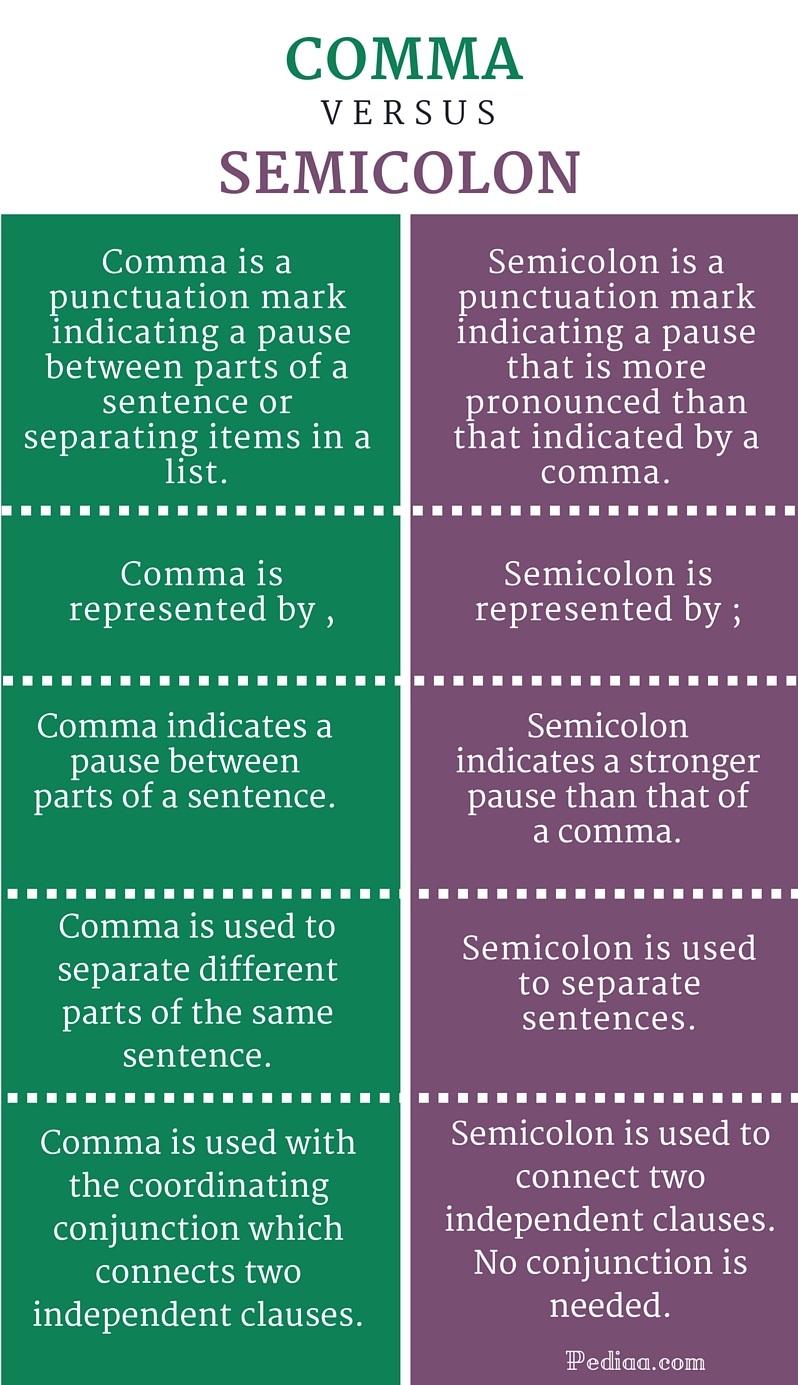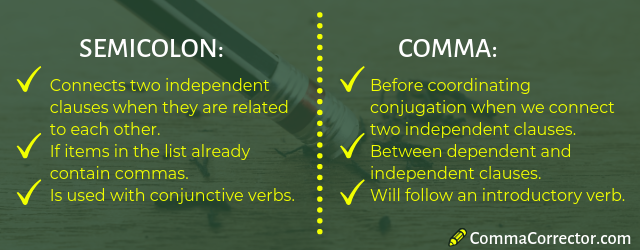When To Use Comma Vs Semicolon - As a proper white person, it is essential to have a good grasp of grammar and punctuation. One of the most common areas of confusion for many people is knowing when to use a comma versus a semicolon. Both of these punctuation marks have their unique purposes, and when used correctly, they can help make your writing more engaging and effective. In this article, we'll take a closer look at the difference between a comma and a semicolon, and provide you with some tips on how to use each of them properly.
Comma vs Semicolon: What's The Difference?
The first thing to consider when distinguishing between a comma and a semicolon is their function. A comma is a punctuation mark that is used to separate different parts of a sentence or to create a list of items. A semicolon, on the other hand, is used to connect two related independent clauses. An independent clause is a part of a sentence that can stand alone as a complete thought or sentence.
1. Comma Usage
The most common use of a comma is to separate items in a list. For example, "I need to go to the store to buy eggs, milk, and bread." Commas are also used to separate clauses in a sentence. For example, "I went to the store, and I bought some milk." Commas can also be used to set off nonessential or parenthetical clauses in a sentence. For example, "My uncle, who lives in Paris, sent me a postcard." Finally, commas can be used to set off phrases or clauses that add additional or contrasting information. For example, "The weather was terrible, but we decided to go to the beach anyway."

2. Semicolon Usage
The semicolon is used to connect two related independent clauses. For example, "I am going to the store; I need to buy some eggs." Note that both clauses can stand alone as complete sentences, but they're connected with a semicolon. You would not use a semicolon to connect a dependent clause to an independent clause, only two independent clauses. It's also essential to note that semicolons should generally be used sparingly; otherwise, your writing can become choppy and difficult to read.

Tips For Using Commas and Semicolons
Now that you know the difference between a comma and a semicolon, here are some tips to help you use them correctly in your writing.
1. Use Commas To Separate List Items
When you're creating a list of items, always use a comma to separate each item. For example, "I need to buy milk, bread, and eggs." Note that the last item in the list typically includes the conjunction "and" before the comma.
2. Use Commas To Set Off Nonessential Clauses
When you're adding extra information to a sentence but it's not essential to the meaning of the sentence, you can use a comma to separate the clause. For example, "My sister, who is a teacher, loves to read." Note that the sentence still makes sense if you remove the clause set off by commas.
3. Use Semicolons Sparingly
Semicolons are useful for connecting related independent clauses, but you should avoid using them too often. Overusing semicolons can make your writing choppy and difficult to read. Instead, try to break up your sentences into simpler statements or use other forms of punctuation, such as periods or commas.
4. Use Commas With Introductory Phrases
When you're introducing a sentence with a phrase, use a comma to separate it from the rest of the sentence. For example, "After I finish work, I'm going to the gym." Note that it's important to use a comma with introductory phrases but not with introductory clauses.
5. Use Semicolons To Connect Related Independent Clauses
When you have two independent clauses that are related and need to be connected, use a semicolon. For example, "I'm going to the store; I need to buy some bread." Note that you would use a period instead of a semicolon if the clauses were not related.
How To Use Commas and Semicolons Correctly
Now that you have a better understanding of the difference between a comma and a semicolon, it's essential to know how to use them correctly in your writing. Here are some tips to help you get started.
1. Practice With Example Sentences
One of the best ways to get comfortable with using commas and semicolons is by practicing with example sentences. Try to create some sentences on your own and see how using different variations of commas and semicolons can change the meaning and flow of the sentence.
2. Read More
Reading is an excellent way to improve your writing skills, including your understanding of punctuation. When you read a book or article, pay attention to how commas and semicolons are used in the text. You can then apply these techniques to your writing.
3. Get Feedback On Your Writing
As you work on improving your punctuation skills, it's helpful to get feedback on your writing from others. This can be a teacher, mentor, or even a friend who has a good understanding of grammar and punctuation. They can help point out where you're using commas and semicolons incorrectly and provide you with suggestions on how to improve.
4. Use Online Tools
There are many online tools available that can help you improve your writing skills, including your punctuation. These tools can check your writing for errors and suggest ways to improve your use of commas and semicolons. Some popular tools include Grammarly and Comma Corrector.

At the end of the day, knowing when to use a comma versus a semicolon is an essential skill for any writer. By following these tips and practicing your punctuation skills, you can improve the effectiveness of your writing and create engaging content that resonates with your readers. Whether you're writing a blog post, an academic paper, or a business proposal, mastering the use of commas and semicolons can help take your writing to the next level.

Find more articles about When To Use Comma Vs Semicolon